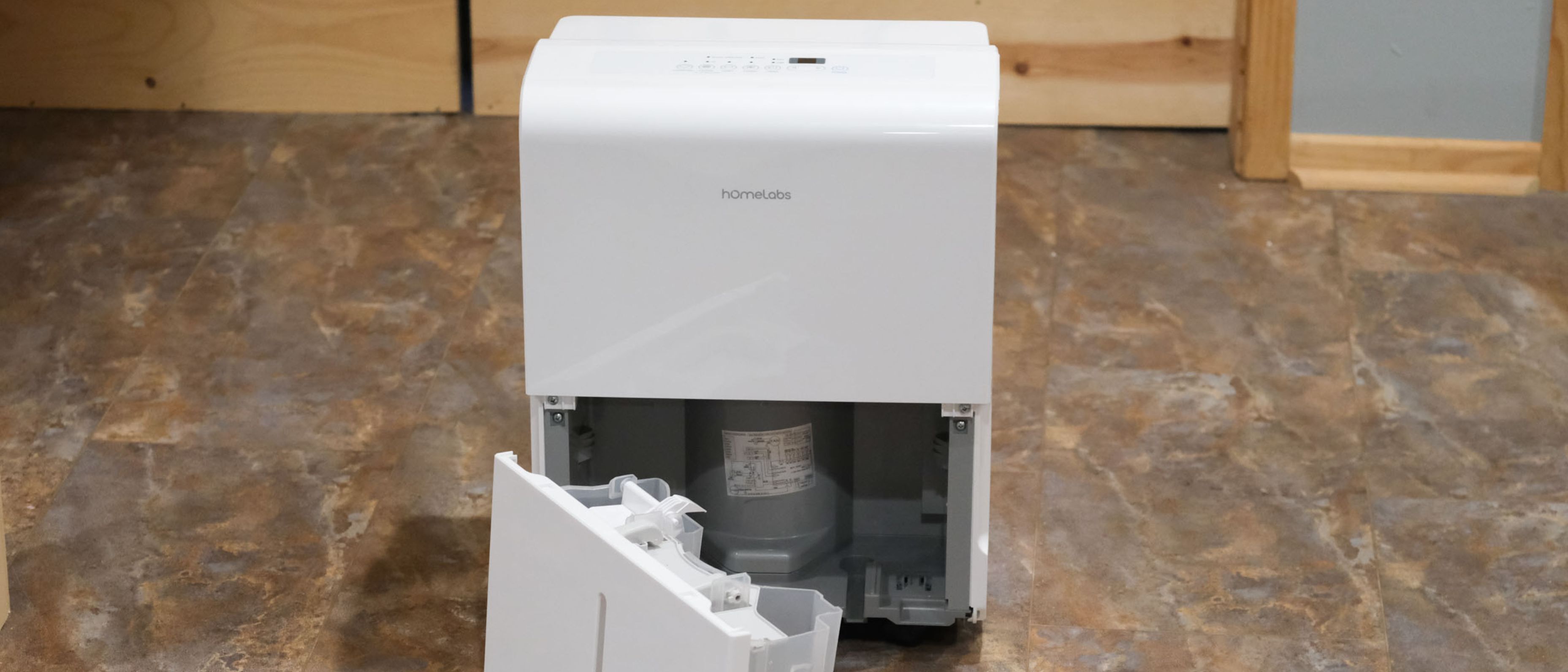
Weight: 33 pounds
Dimensions: 15.2 x 10.24 x 19.7 inches
Tank capacity: 0.8 gallons
Total capacity: 22 pints
Drain Hose: Not Included
Warranty: 1 Year
Free Return or Exchange Within 30 Days (restocking fee may apply)
When we get the occasional rain in Colorado, we get it all at once, and the ground can’t soak it all up. Unfortunately for me, my basement does an admirable job of collecting all that moisture. The sump pump gets overwhelmed and suddenly we have an indoor swimming pool in the basement. This is why investing in one of the best dehumidifiers can make a huge difference.
The Homelabs 22 Pint Dehumidifier stands to get a big workout at my home during those spring storms. My basement measures around 900 square feet, which falls nicely into the advertised range of this unit.
While we’re now past those spring storms, the remnants of that moisture linger. The Homelabs 22 Pint Dehumidifier has been running in my basement for a couple of weeks now, and it’s done an admirable job of pulling moisture out of the space. There are some limitations to this small unit — notably it features a small tank that you’ll need to empty frequently — but it’s generally quiet, it looks nice in the space, and it’s easy to move around. It’s ideal for smaller spaces like a bathroom or home office as you see in this Homelabs 22 Pint Dehumidifier review.
Homelabs 22 Pint Dehumidifier review: Price and availability
The 22-Pint Dehumidifier is currently available at Amazon for $219 as well as at Home Depot; you can buy it directly from Homelabs for $249. If you do buy through Homelabs, you’ll get free shipping and a financing option through Shop Pay.
Homelabs also offers free returns or exchanges within 30 days, though the website also notes that a 15% restocking fee may apply in certain situations.
Homelabs 22 Pint Dehumidifier review: Design
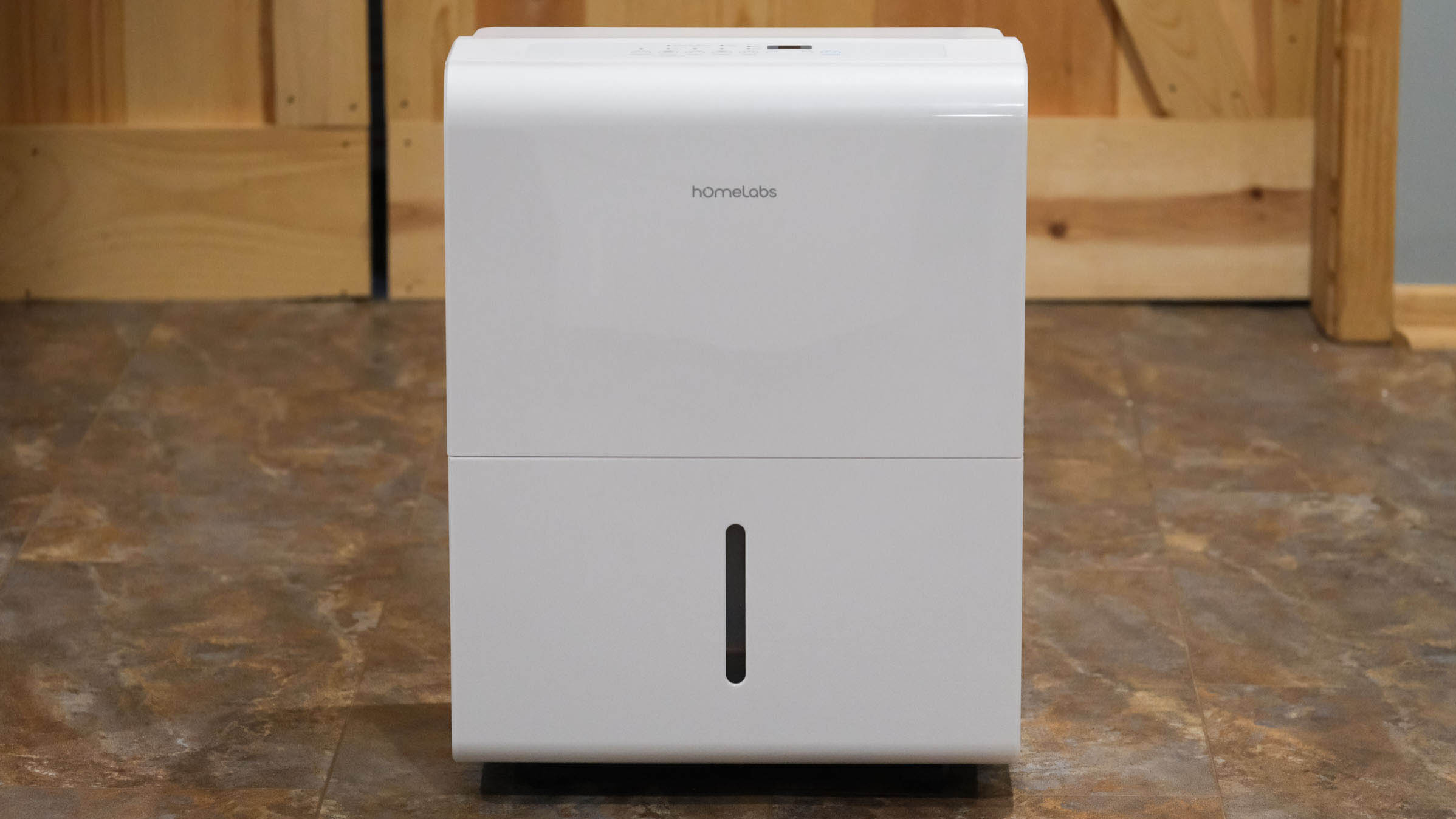
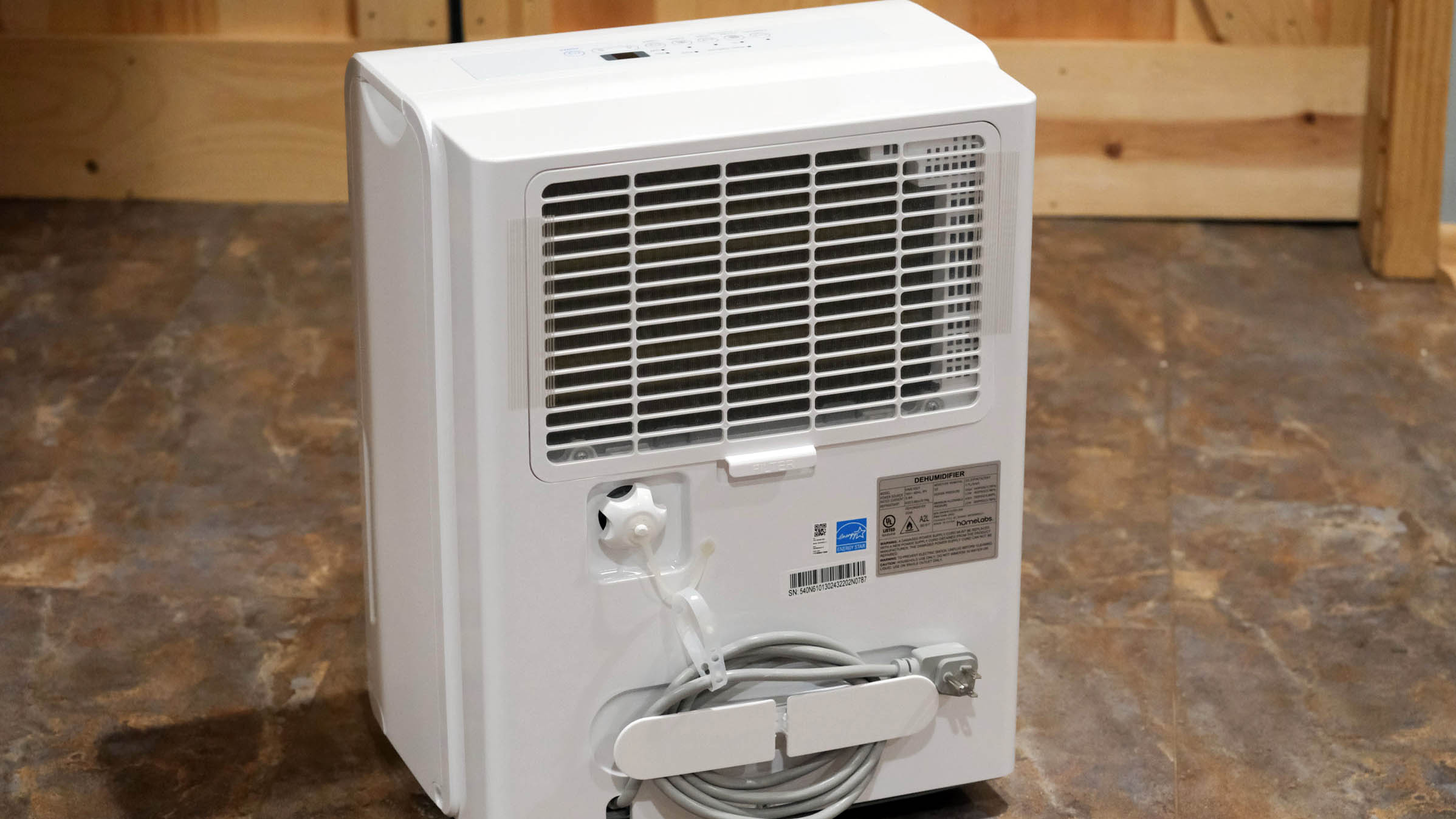
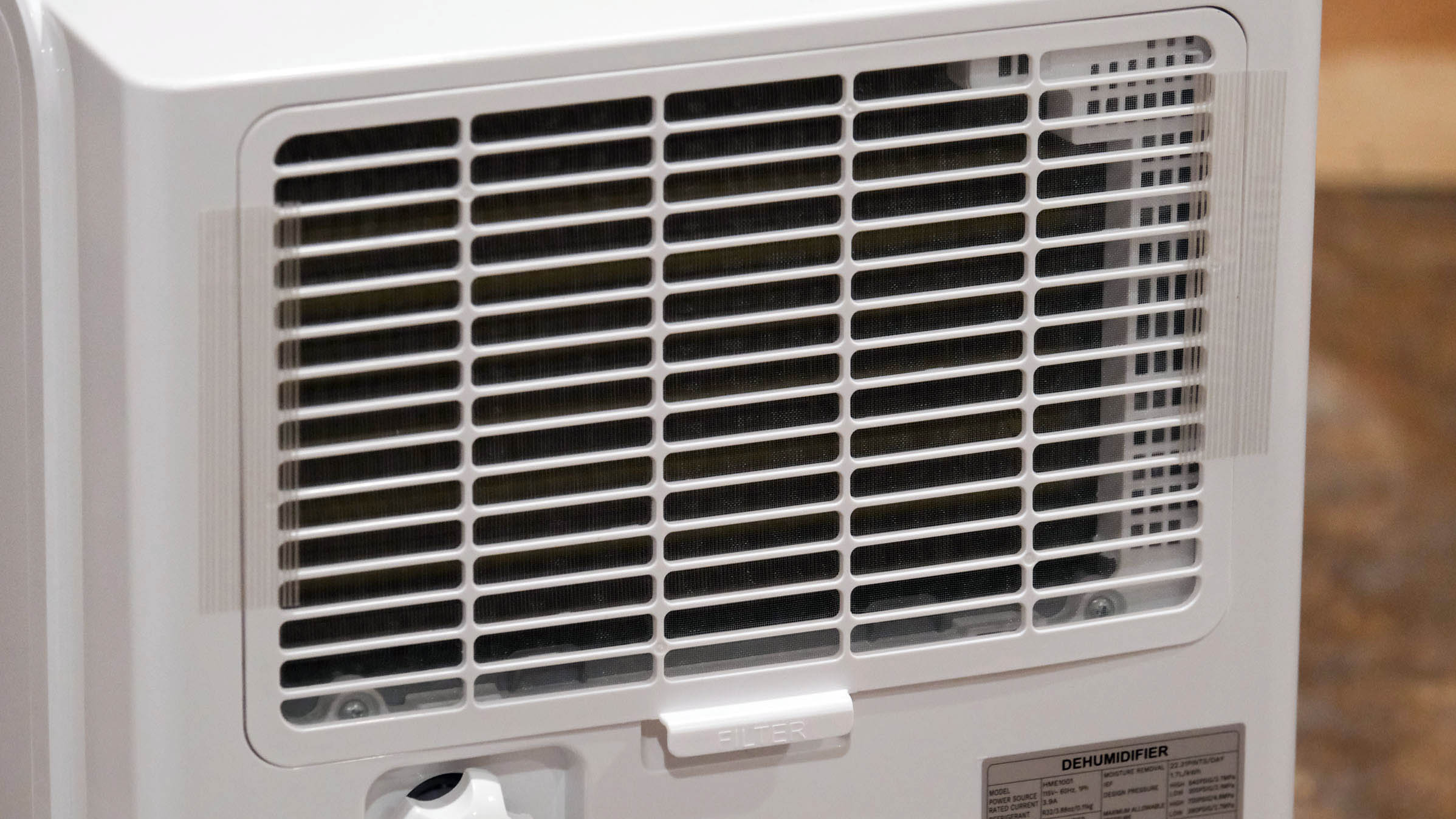
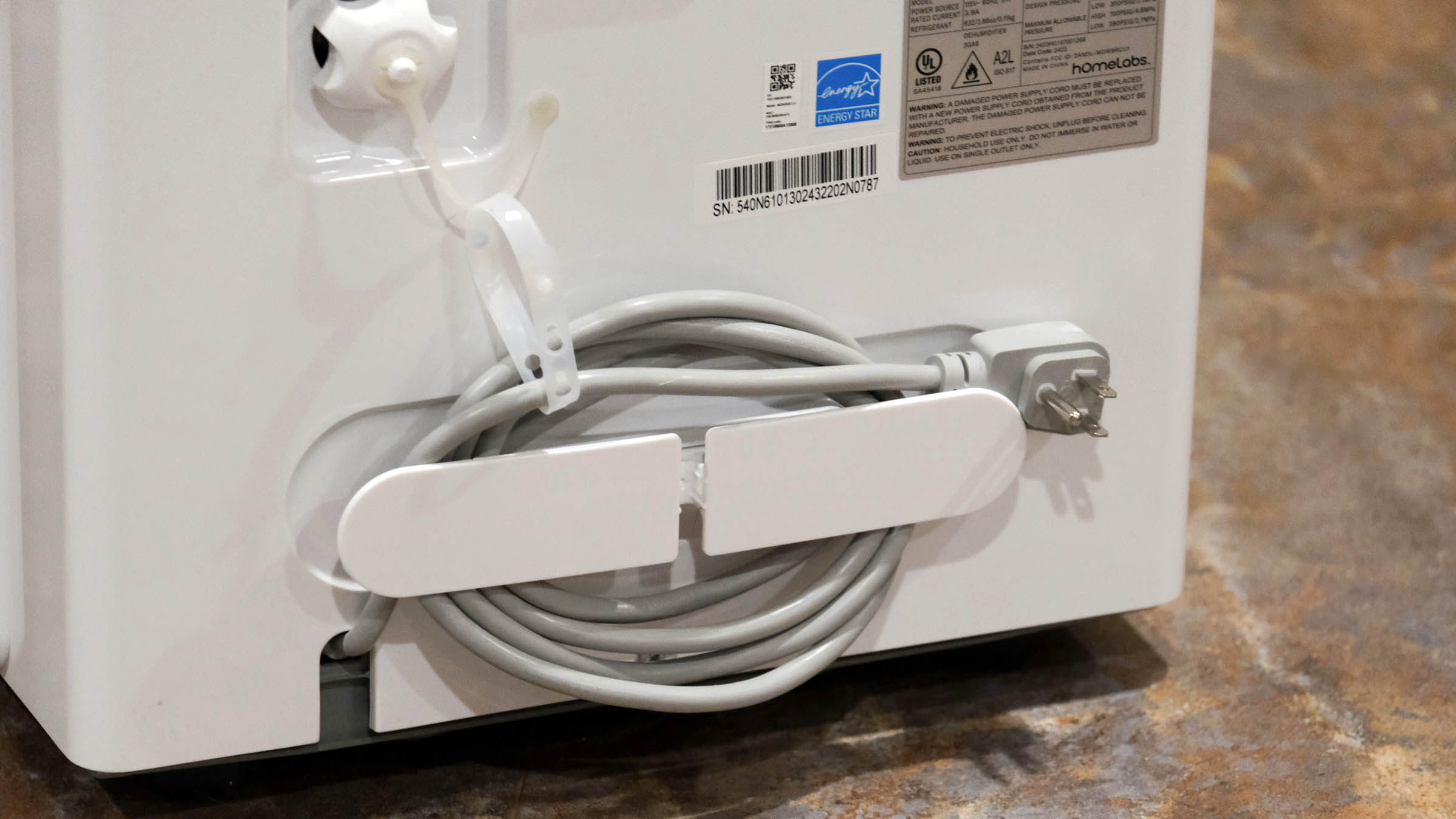
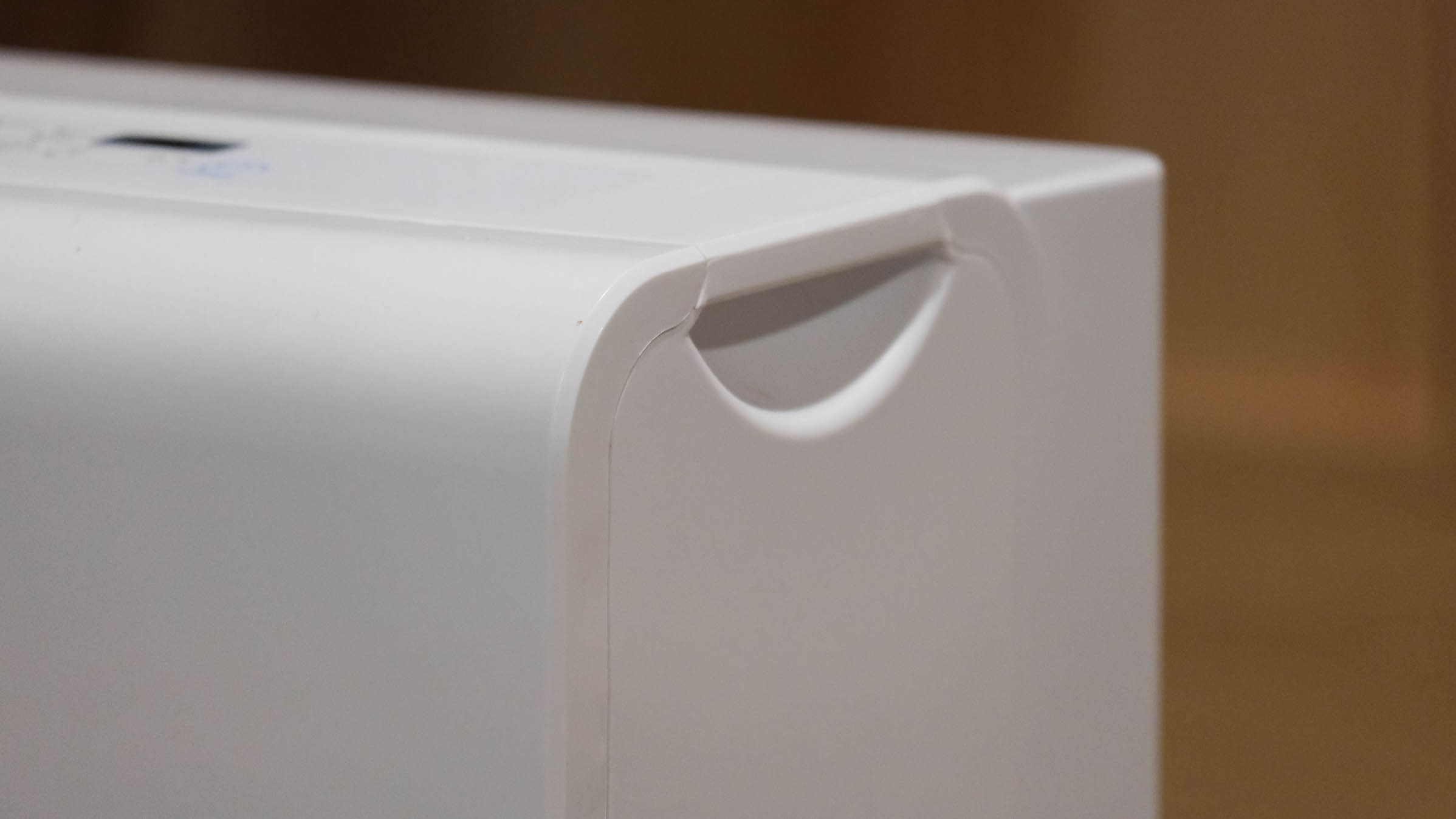
The 22 Pint Dehumidifier removes up to 22 pints of water per day. The tank has a 0.8 gallon capacity, and Homelabs says this unit is ideal for rooms up to 1,500 square feet.
The unit itself features a sleek, minimalist vibe that would be at home in just about any room. The control panel integrates into the top of the unit, with easy-to-operate push buttons and a small screen.
The 22 Pint Dehumidifier has integrated handles and wheels, both of which make the unit easy to move around. The power cord can be stowed on the back of the unit when not in use.
The unit operates in two general ways. The unit shuts off automatically when the tank is full, or it will run continuously if you’re using the house outlet for constant draining. You can also turn the unit on and off manually, either using the integrated buttons or the app. With the app, it’s possible to set the unit to turn off once a certain humidity level has been reached in a specific room.
The comfort button allows you to set the dehumidifier to run until the optimal humidity level based on ambient room temperature has been reached. There’s also a timer function if you just want the unit to run for a certain amount of time.
On the front of the tank, which integrates into the lower half of the unit, a small window with a red indicator line tells you when the tank is full. Just pull the tank out, empty it, and return it to its slot.
Homelabs 22 Pint Dehumidifier review: Performance
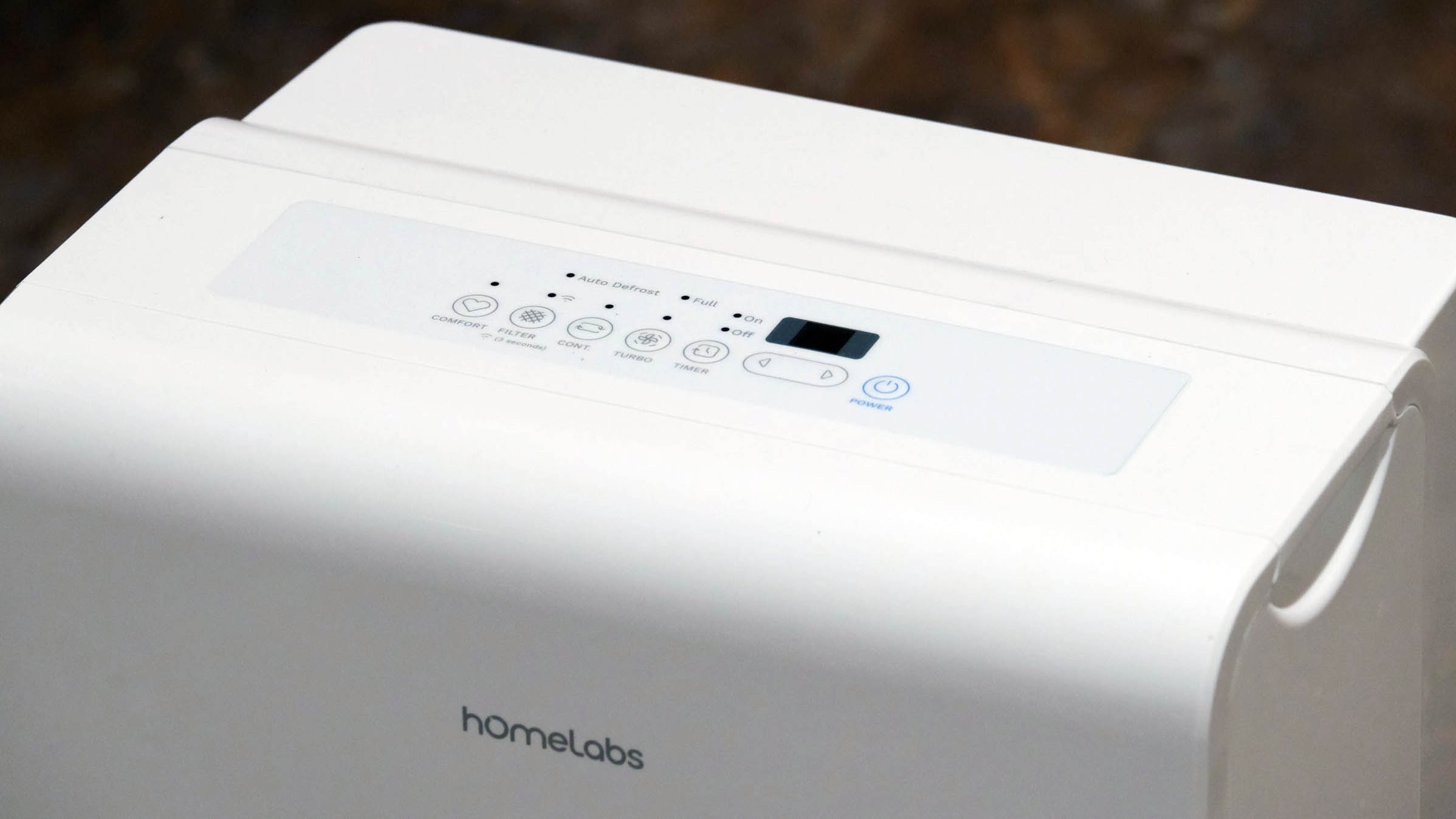
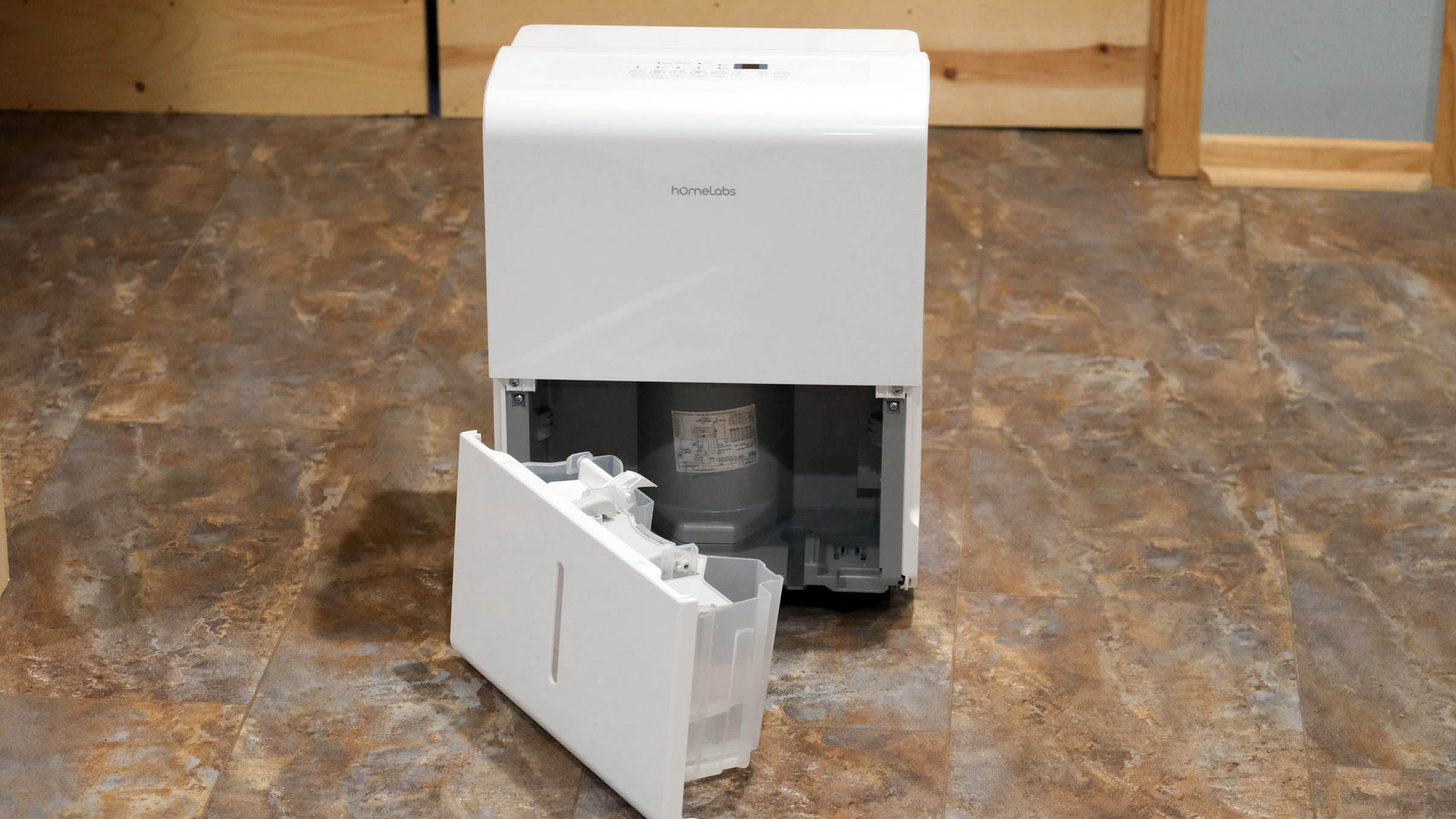
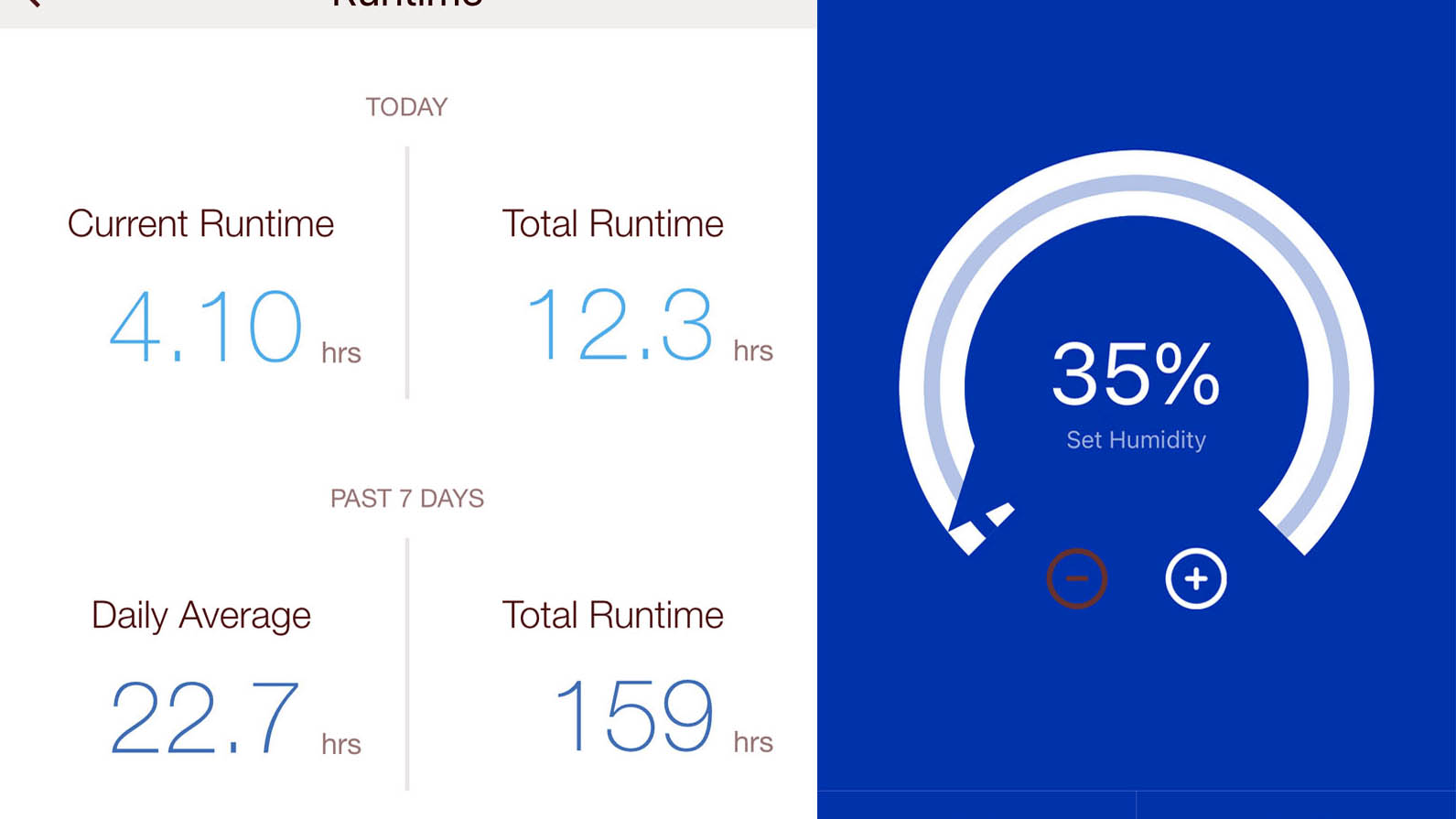
I first set the 22 Pint Dehumidifier up in my basement bathroom, which measures approximately 100 square feet. This was the best opportunity to really saturate the air with humidity and get a sense of how well the 22 Pint Dehumidifier could pull that moisture quickly.
During my first use, I took a hot shower to get the room up to 79% humidity. I then set the dehumidifier’s target at 35% humidity. After 40 minutes or so, the humidity level reached back down to 42%. It reached the target 35% in about an hour. The unit used about 235 watts while running, and used about .20 kWh.
The unit also blew out a decent amount of hot air during this first operation. In subsequent uses, the air blowing out of the vents was cold or simply warm.
On second use in the bathroom space, the dehumidifier never reached its 35% humidity target, even after running for nine hours. It came very close, though, at 37%, where it seemed to hover.
After the bathroom experiment, I moved the unit to the laundry room where our sump pump sits just beneath the concrete pad. This is where we get a significant amount of moisture during the spring season. It’s a small room at about 100 square feet, but it opens into the larger basement space.
It took a bit longer to reach the 35% humidity level I set (the room was around 65% when I turned on the unit) because unlike the bathroom, the moisture in the laundry room didn’t saturate the air. Instead, a lot of that moisture resides in the concrete, around the sump pump, and of course, some in the air itself. The unit ran for about four hours to reach the set level.
Average power consumption was about 270 watts during operation, for a total of 1.14 kWh.
Finally, I put the humidifier in the center of our finished basement, which measures approximately 900 square feet, including the bathroom, laundry room, and storage space with the doors open.
I set the target for 35% humidity. Strangely, when I started the unit, it registered the ambient humidity at 68%, which seemed remarkably high. Indeed, Alexa registered it at 48% at the very same moment. The Alexa measurement certainly seemed more in line with how it felt in the room. This was the first time there was any major disparity between the Homelabs reading and the Alexa reading.
After four hours of run time, the dehumidifier still had not reached the 35% target; it hovered around the 39% mark for a couple of hours.
During those four hours, the average power consumption was 267 watts, for a total of 1.11 kWh.
The HomeLabs 22 Pint Dehumidifier seems to work more accurately in smaller spaces. In larger spaces, the readings tend to be a bit inaccurate, and the unit struggles to reach the target dehumidification level.
The tank fills quickly if the room is very humid. It’s a small tank, which means you’ll need to empty it more frequently. A workaround is to use the drain hose, but of course that requires some sort of floor drain or other receptacle in which to drain the water.
It operates quietly, averaging right around 55 decibels. That’s equivalent to a conversation between you and a friend. In a small space, this might be bothersome — especially if it’s a bedroom and you’re trying to sleep — but in medium and large spaces, it’s quiet enough that it blends into the background for the most part.
Homelabs 22 Pint Dehumidifier review: App
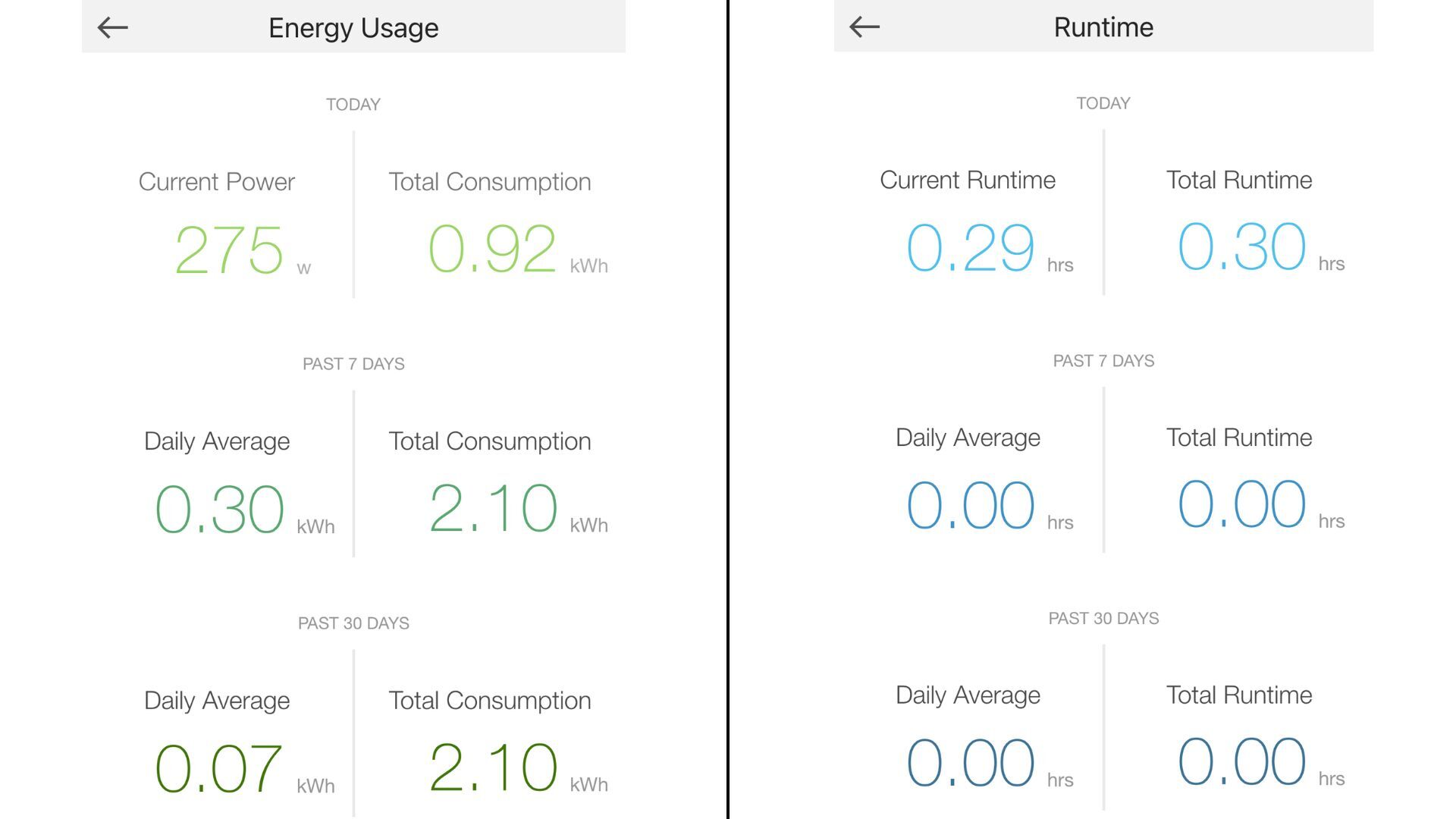
The Homelabs app allows you to control the dehumidifier from your home and monitor its performance in real-time. You’ll need to sign up for an account and pair your phone to the device, which takes some time but is a pretty simple affair.
The pairing process itself takes less than a minute once you’ve got the app downloaded and your account set up. And you can pair multiple Homelabs devices once you’re set up. You’ll need your Wi-Fi password handy to complete this part of the process.
Once you’re set up, you can use Alexa or Google Assistant devices in conjunction with the app to use voice commands. It’s easy enough to get updates on humidity levels and settings, turn the device on or off, and much more.
I found the app super simple to use, so much so that I used it more often than the buttons on top of the unit even when I was standing right next to Dehumidifier. The buttons are easy to use, too, if you’re not into apps. But the simplicity of the Homelabs app made it preferable for me.
Homelabs 22 Pint Dehumidifier review: Comparison
The Homelabs 22 Pint Humidifier may not have a large capacity compared to the Frigidaire FFAP5033W1, which is 50 pints and the best dehumidifier we've tested. However, both models do offer a solid performance, ease of set-up, and ease of cleaning.
While the Homelabs dehumidifier did an excellent job managing humidity levels, results were more accurate in smaller spaces (up to 500 square feet.). However, if you had a larger area to cover, the LG PuriCare dehumidifier would be more suitable for larger rooms or basements. That model comes with a 50-pint capacity, a large digital display and a clear water bucket with a large handle.
For its price, the Homelabs 22 dehumidifier is decent and performs well, albeit with basic functions. However, if you wanted to splurge on a smart model with advanced settings, the Frigidaire FGAC5044W1is Wi-Fi enabled, and remote control via app and digital assistant.
Homelabs 22 Pint Dehumidifier review: Verdict
While I wouldn’t lean on the Homelabs 22 Pint Dehumidifier to act as my sole means of moisture management during the spring storms here in Colorado, it did an admirable job of managing humidity levels in small- to medium-sized spaces. Its sleek design makes it attractive in any room, and the app is basic and easy enough to encourage using the dehumidifier more often than I otherwise would.
It’s reasonably quiet, though in a bedroom you might find it a bit too noisy unless you’re used to white noise already. If you’re not using the drain hose, you’ll need to monitor the small tank for emptying more frequently.
As a set-it-and-forget-it option in small rooms, the Homelabs 22 Pint Dehumidifier performed well at managing humidity levels with little to no fuss. Setting the unit to turn off at a specific humidity level doesn’t always work super accurately, but that’s really the only niggle in an otherwise great unit. It’s more accurate in smaller spaces, and it works well in less time. It’s most efficient in spaces of about 500 square feet or less.







